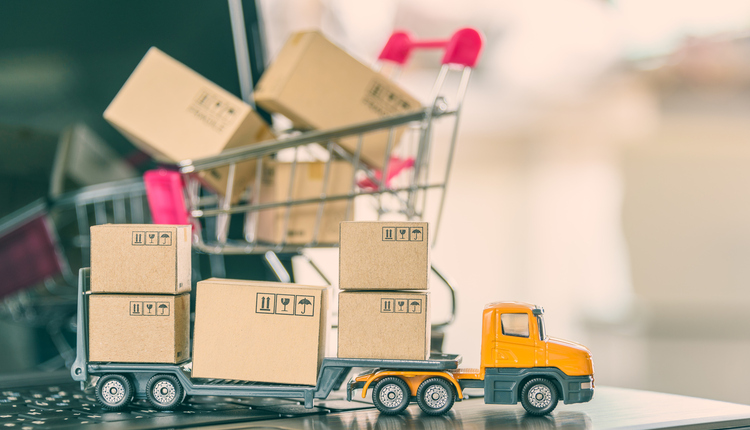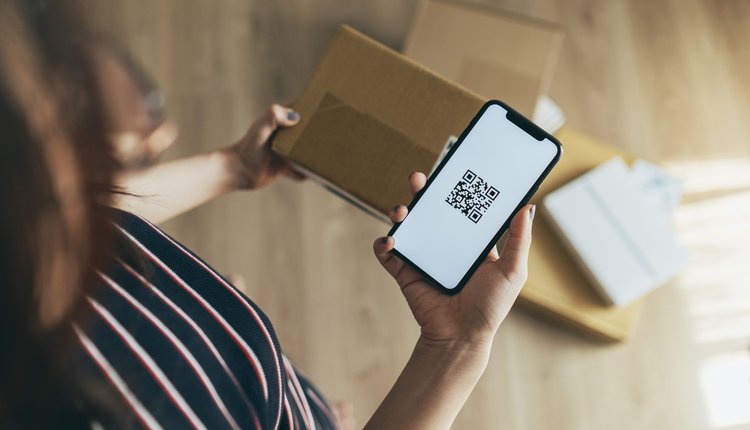Of course, we know returns are unavoidable – especially in e-commerce, where shoppers can’t try items on before purchasing – but they don’t have to be miserable for you or your customers.
By taking the time to put a robust returns solution in place, you have an opportunity to make returns a strategic opportunity for reducing costs, keeping more sales, and increasing customer loyalty.
And that last point is significant. With 89% of shoppers checking the return policy before making a purchase, it’s clear that an effortless return experience is at the top of their priorities. What’s more, 87% of consumers are unlikely to buy again from a brand after a poor return experience. All of these stats point to one thing – your return process has an undeniable impact on your customer loyalty, and in turn, your bottom line.
Let’s take a look at seven ways you can raise customer loyalty and retention through returns management.
Offer Box-Free Return Drop Offs
Remember how we mentioned that a majority of shoppers find returns to be the most painful part of buying online? Imagine what a big advantage it would be if you could solve this problem for them by letting them eliminate the hassle and wait of returning by mail. Many merchants provide shoppers with multiple delivery options when checking out, like paying more for expedited shipping. The same idea applies to returns, where shoppers want choices and control over the process.
Delight them with the convenience of buy online, return to store by offering box-free, in-person return drop off to a third-party network. No shopper wants to deal with the dreaded arts-and-crafts project of printing labels, taping up boxes, and waiting in line at the post office to send items back through the mail. Instead, they can start online and receive a QR code and directions thousands of drop-off locations nationwide.
Amazon understands the advantage of removing this friction from the online shopper journey and offers multiple box-free drop-off options, from Kohl’s to Whole Foods to the UPS Store. Amazon is training consumers to expect this level of service for all their returns, making it vital for merchants to match this level of convenience.
Make Return Drop-Offs Contact-Free with QR Codes
The coronavirus pandemic not only altered the way retailers do business, but shifted the ways in which people feel comfortable shopping, as well. While many consumers still crave an in-person experience, they’re looking to do it as safely and with as little contact as possible. As technology like digital wallets becomes a popular payment option to allow for contact-free transactions, similar steps can be taken when it comes to accepting returns.
For retailers offering in-person returns, consider using QR codes to allow for a completely touch-free experience. Shoppers can initiate their return online to receive a code corresponding to their unwanted item. That way, when they come in to make the return, they can hold up the code on their phone for an associate to scan and pull up the necessary information. Take things a step further by providing a place for shoppers to bag their items themselves, helping to prevent your associates from unnecessary contact as well.
Provide Immediate Refunds
Ask a customer service agent the number one question they receive ,and they’ll almost always respond with some version of, “Where’s my refund?” When returns aren’t processed quickly, customer service teams receive a higher rate of frustrated calls from shoppers who may not purchase again after a poor experience.
If your returns solution allows for refunds to be initiated the moment an item is dropped off, shoppers are no longer waiting. Not only does this reduce the burden on your CX team, but it relieves shoppers from having to constantly check their credit card statements or panic that their return was lost or forgotten.
Make Exchanges Effortless
While returns are unavoidable, you can keep more sales by turning refunds into exchanges instead. The key is to make exchanges as easy as possible to complete, in order to increase the likelihood of your shoppers not just asking for their money back. Ideally, online exchanges should be conducted in as few clicks as possible. In fact, with the right software in place, you could even allow shoppers to exchange for another size in just one click!
For example, if your shopper is returning a pair of shoes online and selects “Too Small” as the return reason, your software could immediately suggest the next larger size available as an exchange option. In this way, not only do you get to save the sale, but your shoppers get what they really want without any hassle.
Promote Your Return Policy to Remove Customer UncertaintyDid you take the time to build a seamless return policy that your shoppers love? That’s great! Now stop trying to hide it in obscure spots like your site’s FAQ section. Trying to pretend returns don’t exist doesn’t actually prevent returns. It just frustrates shoppers who will still make the return anyway, except now they’re irritated.
It’s tempting to think otherwise, but highlighting your return policy does not encourage returns. Quite the opposite, it makes shoppers feel more confident about buying in the first place, as they feel comforted that it won’t be a huge hassle if things don’t work out. And since we know shoppers look at return policies before they buy, making them clear and easy to find is a great way to boost customer retention.
Enhance Sustainability with Reusable Packaging
Over 61% of shoppers only buy from retailers with sustainable business practices, so providing eco-friendly return options is another way to make them happy, while amplifying your values. Collecting returned items from different retailers at your third-party return drop-off location and aggregating them into reusable totes for bulk shipping provides a huge opportunity to make returns better for the planet – not just by reducing fuel waste with fewer shipments, but reducing greenhouse gas emissions by replacing cardboard boxes with reusable containers.
As an added bonus, aggregation helps you reduce costs by avoiding expensive individual shipments. After all, it costs a lot more to ship 15 one-pound boxes than it does to ship one 15-pound box.
Don’t Make Shoppers Contact Customer Service
Think about the last time you had to make a call to return an item that didn’t work out. You more than likely had to wait for a robot to list off a series of options before eventually getting to a human who – if you’re lucky – won’t transfer you to two or three other departments before you’re finally connected to the right person. And then what? Maybe they try to convince you to keep the item. Or they may provide a series of frustrating steps you have to complete just to get rid of something you don’t want in the first place.
No one wants to make a call in order to return something. If you can automate your return process via software, you’re providing a streamlined experience for your shoppers – and avoiding confused and frustrated customer service calls in the process. With a branded online flow, you can allow your shoppers to choose return reasons, request exchanges, and select refund methods in just a few clicks. Since we know returns play a huge role in customer retention and satisfaction, this is a way to remove a burden from both your shoppers and your customer service team. As an added bonus, you’ll enjoy cost savings by not having to hire agents to explain your return process over the phone.
David Sobie is CEO and co-founder of Happy Returns.
This article originally appeared in the March/April, 2021 issue of PARCEL.










